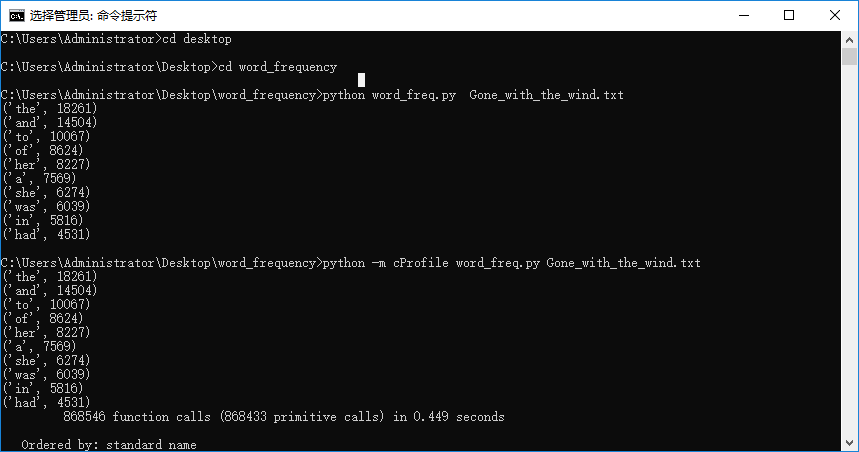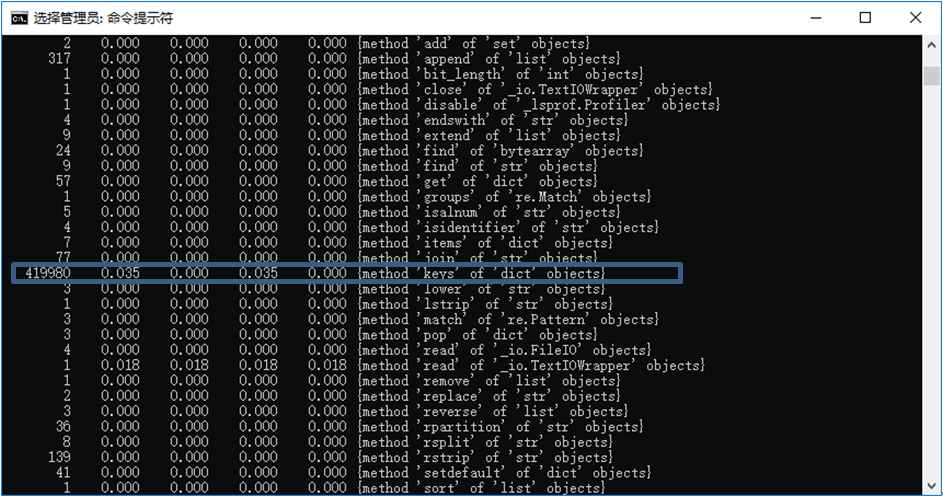1) 自己的基本信息:
- 学号:2017*****1041;
- 姓名:郎华
- 码云仓库地址:https://gitee.com/langhua0310/word_frequency
2) 程序分析
- 读取文件到缓冲区
def process_file(dst): # 读文件到缓冲区 try: # 打开文件 f = open(dst) except IOError as s: print (s) return None try: # 读文件到缓冲区 bvffer = f.read() except: print ("Read File Error!") return None f.close() return bvffer
- 添加处理缓冲区 bvffer代码,统计每个单词的频率,存放在字典word_freq
def process_buffer(bvffer): if bvffer: word_freq = {} # 下面添加处理缓冲区 bvffer代码,统计每个单词的频率,存放在字典word_freq for item in bvffer.strip().split(): word = item.strip(punctuation+' ') if word in word_freq.keys(): word_freq[word] += 1 else: word_freq[word] = 1 return word_freq
- 设置输出函数,排序并输出 Top 10 的单词,统计词频
def output_result(word_freq): if word_freq: sorted_word_freq = sorted(word_freq.items(), key=lambda v: v[1], reverse=True) for item in sorted_word_freq[:10]: # 输出 Top 10 的单词 print(item)
- 调用main函数,用来测试
if __name__ == "__main__": import argparse parser = argparse.ArgumentParser() parser.add_argument('dst') args = parser.parse_args() dst = args.dst bvffer = process_file(dst) word_freq = process_buffer(bvffer) output_result(word_freq)
3) 性能分析结果及改进。
- Gone_with_the_wind.txt运行:

- Gone_with_the_wind.txt 执行次数最多的代码:

- Gone_with_the_wind.txt 执行时间最长的代码:

4)改进代码及结果截图 。
代码改进后缩短了执行时间
将
def process_buffer(bvffer):
函数中的代码
if word in word_freq.keys():
改为
if word in word_freq:
- 运行结果


5) 给出你对此次任务的总结与反思。
在本次课后作业中,我更加熟练的掌握了码云以及博客云的使用,也再一次复习了上次作业中git传输远程仓库的操作。学会了新建分支。





 浙公网安备 33010602011771号
浙公网安备 33010602011771号